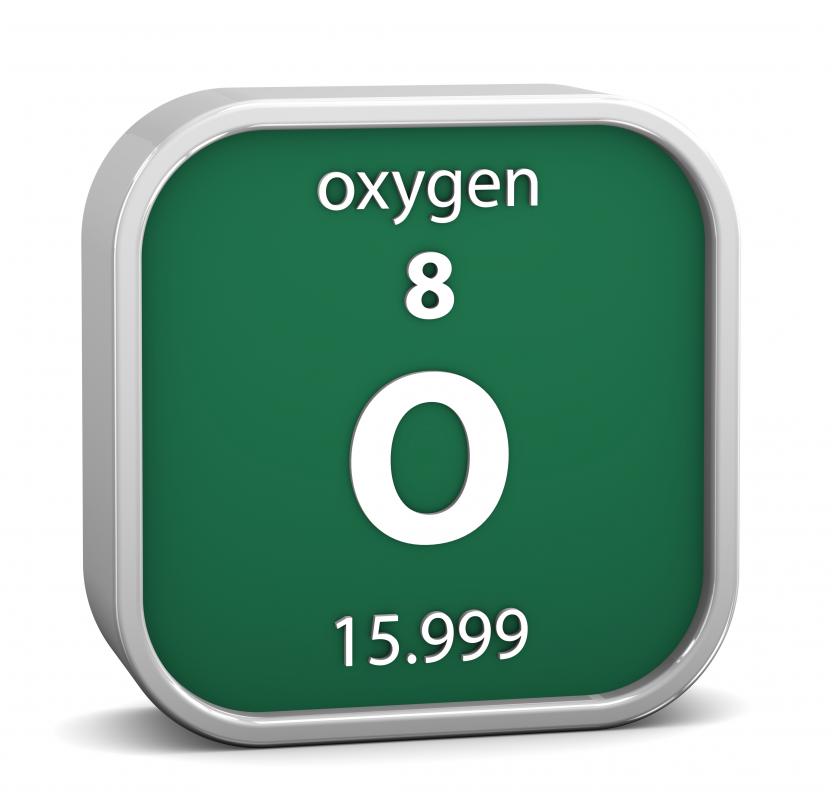At TheHealthBoard, we're committed to delivering accurate, trustworthy information. Our expert-authored content is rigorously fact-checked and sourced from credible authorities. Discover how we uphold the highest standards in providing you with reliable knowledge.
What is a Polar Molecule?
A polar molecule is a molecule that has a mostly positive charge on one side and a mostly negative charge on the other. This charge difference allows the positive end of the molecule to attract to the negative end of another. A hydrogen bond, a special attraction between some polar molecules, is another important characteristic. It is this bond that helps to make deoxyribonucleic acid (DNA)’s double helix possible. The hydrogen bond between the materials in DNA’s composition helps to keep the shape stable.
Covalent bonds and ionic bonds are the two ways that two atoms can be joined in molecules. It is the covalent bond, however, that produces a polar molecule. Covalent bonds occur when one atom shares electrons with another. Sometimes, one atom will attract the electrons more than another. Should this happen, a polar molecule can result.

Such molecules do not automatically result when one atom in a molecule attracts more electrons than another. If the distribution of charge is the same over the whole molecule, the result is a non-polar molecule. For example, water is polar because the oxygen side is negative while the hydrogen side is positive. On the other hand, boron trifluoride (BF3) is non-polar. Though the fluorine atoms attract electrons more than the boron, the three fluorine atoms surround the boron, resulting in an overall negatively charged molecule.

A hydrogen bond is a particularly important side-effect of some covalent bonds. A hydrogen bond is a special kind of attraction involving some polar molecules that have hydrogen in their make up. Sometimes these molecules will be attracted to other electronegative atoms. The hydrogen bond can cause molecules to stick together more than they would without the bond.

This bond can result in some important properties. For example, it is water's hydrogen bond that contributes to the liquid having such a high boiling point compared to other molecules its size. In order for water to vaporize—that is, turn from liquid to gas—the hydrogen bond’s attraction has to be overcome with more energy. This is also the reason that water absorbs so much energy before it changes temperature. One result of this property is that water is often very effective in cooling. Humans are able to use sweat in order to regulate their body temperature because of this—the water absorbs heat as it vaporizes, leaving a person cooler.

Whether a molecule is polar or not can also determine if a solution will be made. A solution is formed when one or more substances mix together to form a new substance with the same properties all through the mixture. Polar molecules usually form solutions with other molecules that are polar and non-polar with non-polar. Should a polar molecule be mixed with a non-polar molecule, the mixture will usually separate. This is why you can’t mix oil and water—water is polar and oil is not.
AS FEATURED ON:
AS FEATURED ON:














Discussion Comments
I'm trying to understand this part of the article: "This is also the reason that water absorbs so much energy before it changes temperature." Did you mean to write "before it changes _phase_"? Or are you saying it takes relatively more energy input to make water change temperature than it takes to change the temperature of something that's not so polar?
I don't care if it is a product of God's hands or a Big Bang. The universe is pretty amazing and I like learning more about its complexity.
@arod2b42
In my opinion, these details of the earth are all beautiful and require thought, both philosophical and scientific. It is incredible to observe how all of the details of life work together so wonderfully to enable life to continue and thrive. I would agree that we should not isolate details, but I would also add that there should be no epistemological limit to the beauty of the intricate puzzle which is observable in science.
@Armas1313
It would seem that you are suggesting intelligent design in analyzing such a simple concept as Polarity. I think that for such a broad argument it is necessary to observe various concepts and factors which go into science and analyze them objectively, rather than drawing vast philosophical conclusions as you seem to have done. There is nothing unscientific about polar molecules.
Hydrogen bonding is a very unique phenomenon that is essential to life. Most objects in their solid state are heavier than they are in their liquid state. If this were the case with water, ice would sink, and fresh water maritime life would not survive the winter due to being crushed. Not only that, but DNA would not function properly. Such a unique design suggests that the earth is not coincidence.
Post your comments